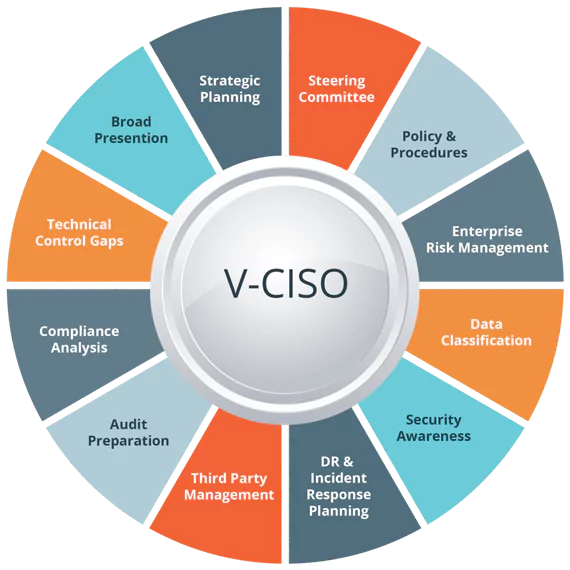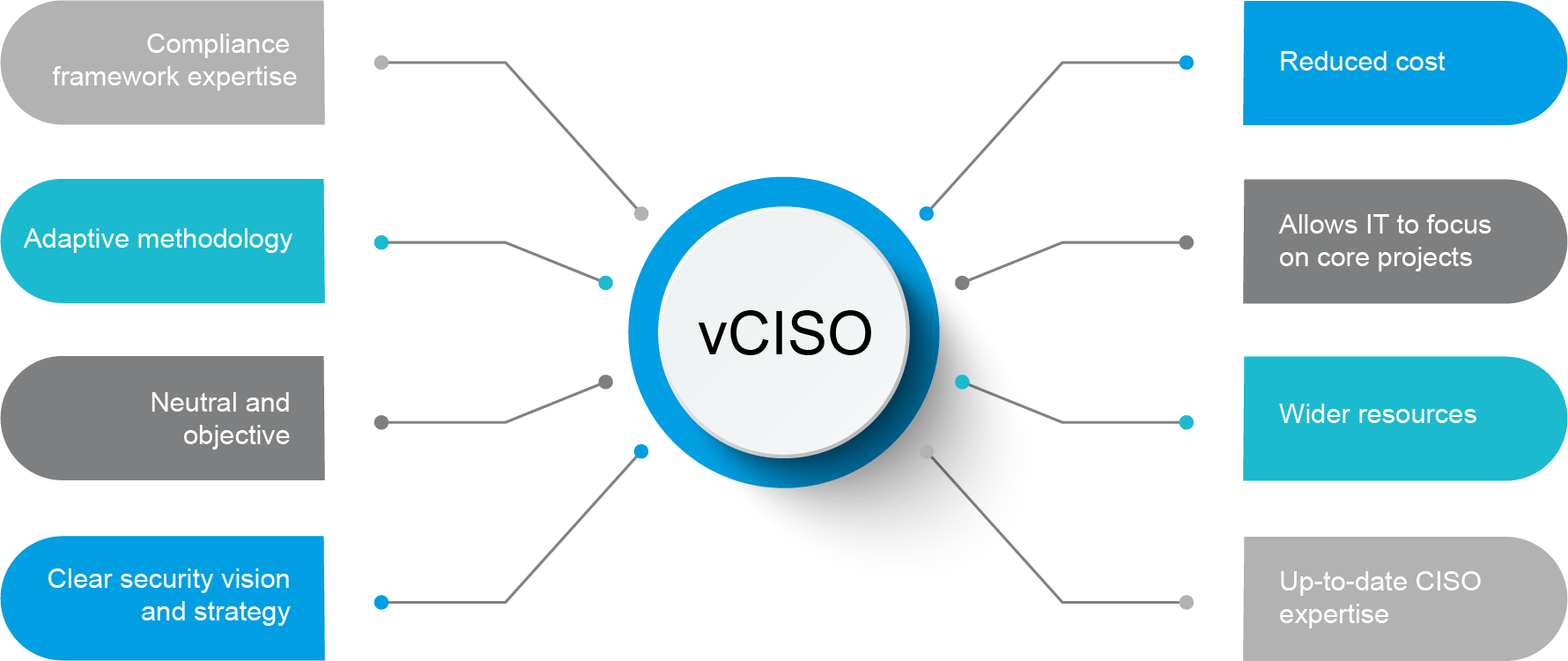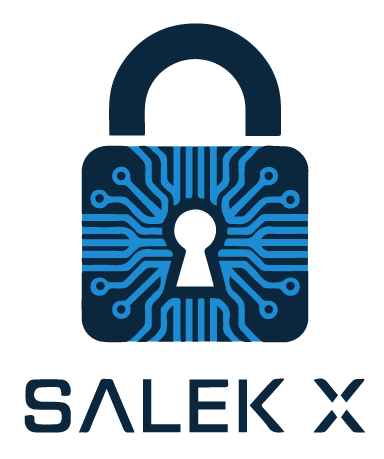Virtual CISO (Chief Information Security Officer) Services
Virtual CISO (Chief Information Security Officer) Services
In today’s rapidly evolving digital landscape, robust cybersecurity leadership is essential for safeguarding your organization’s critical assets and ensuring regulatory compliance. Our Virtual CISO (Chief Information Security Officer) Services provide expert, on-demand cybersecurity leadership tailored to your organization’s unique needs. Ideal for businesses seeking strategic security guidance without the overhead of a full-time executive, our Virtual CISO services empower you to develop comprehensive security strategies, manage risks effectively, and achieve compliance with industry standards.

Our Virtual CISO Services offer dedicated cybersecurity leadership and expertise on a flexible, as-needed basis. We work closely with your organization to understand your specific security challenges and business objectives, delivering strategic guidance and hands-on support to enhance your cybersecurity posture. Whether you’re a small to medium-sized enterprise (SME) or a larger organization looking to augment your existing security team, our Virtual CISO services provide the expertise you need to protect your digital assets and maintain compliance without the cost of a full-time executive.

Strategic Security Leadership:
- Security Strategy Development: Craft and implement comprehensive cybersecurity strategies aligned with your business goals and risk appetite.
- Policy and Procedure Formation: Develop and refine security policies, standards, and procedures to ensure consistent and effective security practices across your organization.
- Security Roadmap Planning: Create detailed roadmaps outlining short-term and long-term security initiatives to enhance your overall security posture.
Risk Management:
- Risk Assessment and Analysis: Identify, assess, and prioritize cybersecurity risks specific to your organization’s operations and industry.
- Risk Mitigation Strategies: Develop and implement effective risk mitigation plans to address identified vulnerabilities and threats.
- Continuous Risk Monitoring: Establish ongoing risk monitoring processes to detect and respond to emerging threats promptly.
Compliance Management:
- Regulatory Compliance: Ensure adherence to relevant industry regulations and standards such as GDPR, HIPAA, PCI DSS, ISO/IEC 27001, and others.
- Audit Preparation and Support: Assist in preparing for and navigating compliance audits, providing necessary documentation and remediation guidance.
- Policy Compliance Monitoring: Continuously monitor and enforce compliance with established security policies and procedures.
Incident Response and Management:
- Incident Response Planning: Develop and maintain robust incident response plans to effectively address and mitigate security breaches.
- Crisis Management: Provide expert guidance during cybersecurity incidents to minimize impact and ensure swift recovery.
- Post-Incident Analysis: Conduct thorough post-incident reviews to identify root causes and implement measures to prevent future occurrences.
Security Awareness and Training:
- Employee Training Programs: Design and deliver comprehensive training sessions to educate staff on cybersecurity best practices and their role in maintaining security.
- Awareness Campaigns: Launch ongoing awareness initiatives to foster a security-conscious culture within your organization.
- Phishing Simulations: Conduct simulated phishing attacks to assess and improve employee resilience against social engineering threats.
Security Architecture and Technology Integration:
- Security Architecture Design: Evaluate and design your security architecture to ensure robust protection of your IT systems and data.
- Technology Assessment: Assess and recommend advanced security technologies and tools to enhance your cybersecurity defenses.
- Integration Support: Assist in the seamless integration of new security solutions into your existing IT infrastructure.
Vendor and Third-Party Risk Management:
- Vendor Security Assessments: Evaluate the security practices of your vendors and third-party partners to ensure they meet your security standards.
- Contractual Security Requirements: Develop and enforce security requirements within vendor contracts to mitigate risks associated with third-party relationships.

Cost-Effective Expertise:
- Affordable Leadership: Access high-level cybersecurity expertise without the financial commitment of a full-time CISO.
- Scalable Services: Adjust the level of support based on your organization’s evolving security needs and budget constraints.
Enhanced Security Posture:
- Proactive Defense: Implement proactive security measures to prevent cyber threats before they impact your organization.
- Comprehensive Protection: Establish layered security defenses that protect your critical assets and sensitive data from diverse cyber threats.
Regulatory Compliance:
- Avoid Penalties: Ensure compliance with relevant regulations to avoid costly fines and legal repercussions.
- Industry Recognition: Achieve and maintain certifications that demonstrate your commitment to cybersecurity and data protection.
Operational Efficiency:
- Streamlined Processes: Implement standardized security processes that enhance operational efficiency and reduce complexity.
- Resource Optimization: Allocate your internal resources more effectively by leveraging external cybersecurity expertise.
Risk Mitigation:
- Reduced Exposure: Minimize the risk of data breaches and cyber incidents through effective risk management and mitigation strategies.
- Business Continuity: Ensure uninterrupted operations with robust incident response and disaster recovery plans.
Increased Customer Trust:
- Build Credibility: Showcase your dedication to cybersecurity, fostering trust and confidence among customers, partners, and stakeholders.
- Competitive Advantage: Differentiate your organization from competitors by highlighting your strategic approach to cybersecurity.
Continuous Improvement:
- Adaptive Strategies: Stay ahead of evolving cyber threats with adaptive security strategies and continuous monitoring.
- Sustainable Practices: Maintain a resilient security posture through ongoing assessments and enhancements.
Use Cases:
- Small to Medium-Sized Enterprises (SMEs):
- Enhance cybersecurity leadership and strategy without the cost of a full-time executive, ensuring robust protection as your business grows.
- Startups:
- Establish a strong security foundation from the outset, integrating best practices and strategic guidance to support rapid scaling.
- Non-Profit Organizations:
- Protect sensitive donor and beneficiary data while maintaining compliance with relevant regulations on a limited budget.
- Healthcare Providers:
- Safeguard patient information and comply with healthcare data protection regulations through expert cybersecurity leadership.
- Financial Institutions:
- Manage and mitigate cybersecurity risks, ensuring compliance with industry-specific regulations and protecting sensitive financial data.
- Educational Institutions:
- Protect academic records and personal information of students and staff, ensuring compliance with data protection standards.
- Government Agencies:
- Strengthen cybersecurity measures to protect classified and sensitive government data, maintaining public trust and regulatory compliance.
